LITERATUR
„Lehre dein Kind niemals, gering von sich zu denken. Gewöhnt es sich, so zu empfinden, so werden auch andere sich gewöhnen, es niedrig zu achten, jetzt das Kind, später den Mann. Lehre dein Kind, nur Erfolg zu träumen und zu erwarten. Langandauernde Erwartung dieses Erfolges bringt Ursachen, Mittel und Wege zu diesem Erfolg.“
never teach your child to think small about itself
cause it will be used to this behavior
and once the child has settled down in this state of mind
others will be used to threat the child in this manner too
first the child later the man
teach your child to only to dream of success
and to hopefully wait that it will become true
so you nourish the child´s hope and not its depression
the long term awaiting this success
will bring the cause, the tools, the skills and the way to all of that
Michael Ende
| Michael Andreas Helmuth Ende | |
|---|---|
| Born | 12 November 1929 Garmisch-Partenkirchen1 |
| Died | 28 August 1995 (aged 65) Filderstadt |
| Occupation | Novelist |
| Genres | fantasy and children's books |
Michael Andreas Helmuth Ende (12 November 1929 – 28 August 1995) was a German author of fantasy and children's literature. He is best known for his epic fantasy work The Neverending Story; other famous works include Momo and Jim Button and Luke the Engine Driver. His works have been translated into more than 40 languages and sold more than 20 million copies, and have been adapted into motion pictures, stage plays, operas and audio books.
Ende was one of the most popular and famous German authors of the 20th century, mostly due to the enormous success of his children's books. However, Ende was not strictly a children's author, as he also wrote books for adults. Ende claimed, "It is for this child in me, and in all of us, that I tell my stories," and that "[my books are] for any child between 80 and 8 years" (qtd. Senick 95, 97). Ende often found frustration in being perceived as exclusively an author for children, considering himself rather a man intending to speak of cultural problems and spiritual wisdom to people of all ages in his works; he wrote in 1985:
- "One may enter the literary parlor via just about any door, be it the prison door, the madhouse door, or the brothel door. There is but one door one may not enter it through, which is the child room door. The critics will never forgive you such. The great Rudyard Kipling is one of a number of people to have suffered from this. I keep wondering to myself what this peculiar contempt towards anything related to childhood is all about."[1]
Ende's writing could be described as a surreal mixture of reality and fantasy. The reader is often invited to take a more interactive role in the story, and the worlds in his books often mirror our reality, using fantasy to bring light to the problems of an increasingly technological modern society. Not least of all because of having attended a Waldorf school as a child, his writings were influenced by anthroposophy.[2][3] Ende was also known as a proponent of economic reform, and claimed to have had the concept of aging money in mind when writing Momo.
He was born in Garmisch (Bavaria, Germany), son of the surrealist painter Edgar Ende. He died in Filderstadt (Germany) of stomach cancer.
- ^ "Man darf von jeder Tür aus in den literarischen Salon treten, aus der Gefängnistür, aus der Irrenhaustür oder aus der Bordelltür. Nur aus einer Tür darf man nicht kommen, aus der Kinderzimmertür. Das vergibt einem die Kritik nicht. Das bekam schon der große Rudyard Kipling zu spüren. Ich frage mich immer, womit das eigentlich zu tun hat, woher diese eigentümliche Verachtung alles dessen herrührt, was mit dem Kind zu tun hat.", Page on Michael Ende by Thienemann, the publishing house that published most of Ende's works
- ^ Peter Boccarius, Michael Ende: Der Anfang der Geschichte, München: Nymphenburger, 1990. ISBN 3-485-00622-X. German.
|
|
|
The Inner Child Like many in the West, I grew up with a concept of the superiority of Spirit over Matter and of intellect over emotions. I have subsequently come not merely to regret my "imprinting," but to feel deeply remorseful over my own misunderstandings, this to the extent of wanting to spend the rest of my life atoning for misconceptions and the imbalances that issued from them. My present understanding cannot be grasped outside of the context of the healer who genuinely wants everyone to be happy and well. In the early 1980s, I met a psychologist, a neighbor named Cynthia Stauffer, later Thea Nye, who took an immediate interest in my work. As a psychologist, she was trained to look at needs and what makes a person feel good and what undermines the psychological sense of well-being. We were forever brainstorming these issues from the angle of what is now called the inner child. The inner child was, of course, always there. People simply were not trying to make contact with that child and did not recognize the importance of the child though I had been somewhat prepared for this realization through my work with a kahuna named Morrnah Simeona. Morrnah had told me that the unihipili will not take in what does not feel good to it. She described the unihipili as a childlike subconscious power that supplies the energy for the manifestation of the rest of our being. Morrnah's initial comment was in response to a question about Rolfing, a form of massage that is often quite painful and, of course, utterly different from the Hawaiian lomi-lomi in which Morrnah was an expert. One day, when I was lying face down on a hardwood floor, Mornnah walked on the bottoms of my feet up the back of my legs and to my skull. I thought I was in Paradise. Moreover, though it was a hot and humid day in Honolulu, Mornnah's feet smelled of roses. It was very easy for me to take in her gift of healing! The Subconscious The subconscious is magnetic. Thus, in its normal mode, it is receptive. Basically, it has only one major defense: discrimination. With great effort, the subconscious can define a situation or healing modality as unsuitable and choose to reject it. This, however, takes strength because it entails resistance and the determination to deflect what is directed towards it. If the subconscious does not rebuff what feels harmful to it, it becomes a victim, and this is, in fact, how many people feel today: they are victims of circumstances that are hurtful, dangerous, and/or life-threatening. The intellect has almost no capacity to understand much less appreciate how the subconscious feels. At best, in a sympathetic moment, it can express some banality or other that the subconscious often does not accept as truth. For instance, "eat this, it will make you better," may sound reasonable to the educated mind but totally fallacious to the subconscious, which, in fact, does know more about the physical and emotional aspects of our being than does the intellect, a part of us that is often deeply out of touch with feelings and the more organic and life supporting aspects of existence. The longer I have studied the subconscious, the more I understand that the physical body is an almost perfect reflection of the psychological patterns held in the subconscious. More importantly, it cannot be healed by platitudes or poisons because these merely contribute to the traumas of (1) not feeling understood and (2) victimization by an intellectually dominant force that arrogantly and mistakenly believes it knows more than what is obvious and instinctually known to the subconscious. $25.00 Given this understanding, I spent many years during my own dark night of the soul searching for what would be healing for others. It has been a long journey. More than thirty years ago, I started an article called "Recovering Innocence." I have never been able to complete this article but I recognize that it the most difficult work we ever do. We all have a schism between the body and mind and between psychology and spirituality. The easiest way to explain this is to take the rules of monastic disciplines. Whether in the East or West, it was generally accepted that a person of the cloth could not serve two masters. The novitiate was required to renounce wealth and sensuality. I can remember films of "great" teachers throwing gold coins into the river to prove they are above materialism and greed. Poor people, even children of the teachers, might watch as the water buried the coins in the silt. How materialism came to be so scorned is baffling to the practical wisdom of the subconscious, a part of us that knows that just as plants need sunlight and water, we are dependent upon life given by God and the support of the Divine Mother or Nature. I might argue that just as there is nothing inherently holy about poverty, there is nothing especially remarkable about celibacy except the fuss people make over it. Obviously, we live in a time of great sexual conflict and confusion where there is tremendous potential for traumatic experiences as well as bliss. Denial of our physicality serves no one any more than any other austerity. Rigid diets and eccentric notions concerning money and sex are personal issues, and while I can't speak for the Divine, I suspect that we live in a Universe that has come into being because of the union of Essence and Space, masculine and feminine, and Purpose with Process. It is exactly this process that is so misunderstood by those who would attempt to heal without understanding the nature of the wounds that have been experienced by those who are moving towards the fulfillment of their destinies but encountering obstacles, pain, and suffering in the process. It is my mission now to support the healing of the schism between psychology and spirituality, to do so lovingly and with deep appreciation of the causes of disharmony. I work with diet and herbs that address symptoms, with inspired classical music to awaken a sense of the divine, and in altered states of consciousness that resemble the near-death experience so that individuals can experience the compassionate understanding that exists within the soul.
|
| ||
| ||||||
|
|
|
|
| ||
|
|
|
| |||
|
|
|
|
| ||
|
|
|
Sacred Medicine Sanctuary Copyright by Ingrid Naiman 2001 and 2006 |
| ||
|
|
|
|
| ||
|
|
|
|
in memorial to the friend who sended this universal librairy
may he be allways blessed
it was his last message before he left this world forever
to enter the eternal realms
so lets use his last gift to us wise for life
Les Misérables ist der französische Originaltitel des Romans Die Elenden von Victor Hugo aus dem Jahre 1862 sowie der Titel (oder Teil des Titels) folgender Adaptionen dieses Werkes:
- eines Musicals von Claude-Michel Schönberg und Alain Boublil – siehe Les Misérables (Musical)
- eines Films von Raymond Bernard – siehe Die Verdammten (1934)
- eines Films von Richard Boleslawski – siehe Die Elenden (1935)
- eines Films von Jean-Paul Le Chanois – siehe Les Miserables (1958)
- eines Films von Claude Lelouch – siehe Les Misérables (1995)
- eines Films von Bille August – siehe Les Misérables (1998)
- eines Films von Josée Dayan – siehe Les Misérables – Gefangene des Schicksals
- eines Films von Tom Hooper – siehe Les Misérables (2012)
- sowie einer Reihe weiterer Romanverfilmungen – siehe Die Elenden#Verfilmungen.
http://de.wikipedia.org/wiki/Les_Mis%C3%A9rables
Plot Summary: "Les Misérables" is the motion-picture adaptation of the beloved global stage sensation seen by more than 60 million people in 42 countries and in 21 languages around the globe and still breaking box-office records everywhere in its 27th year. Helmed by "The King's Speech's" Academy Award®-winning director, Tom Hooper, the Working Title/Cameron Mackintosh production stars Hugh Jackman, Oscar® winner Russell Crowe, Anne Hathaway and Eddie Redmayne.
http://www.comingsoon.net/films.php?id=78686
AB 2013 IM KINO

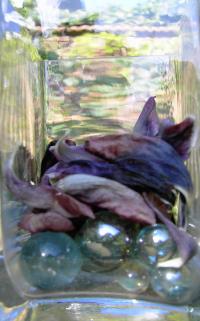
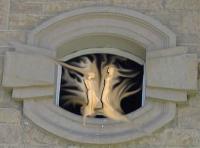



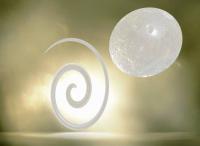



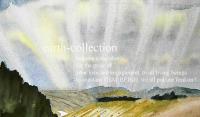


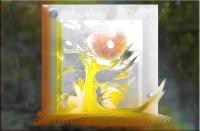
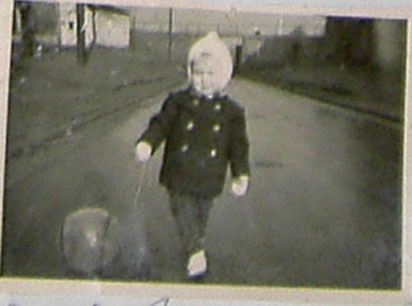
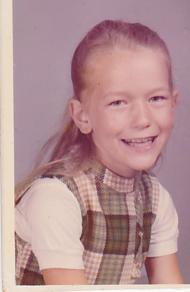


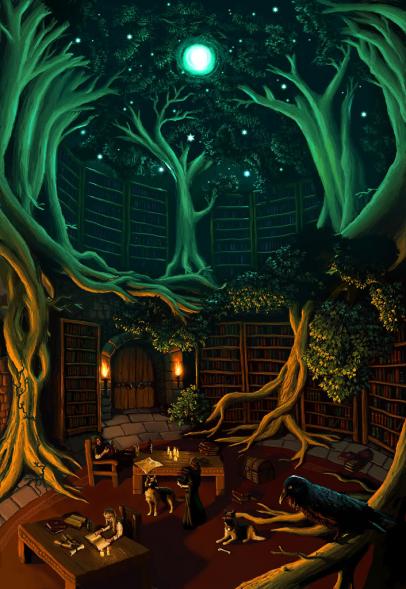
 Dies ist eine mit page4 erstellte kostenlose Webseite. Gestalte deine Eigene auf www.page4.com
Dies ist eine mit page4 erstellte kostenlose Webseite. Gestalte deine Eigene auf www.page4.com